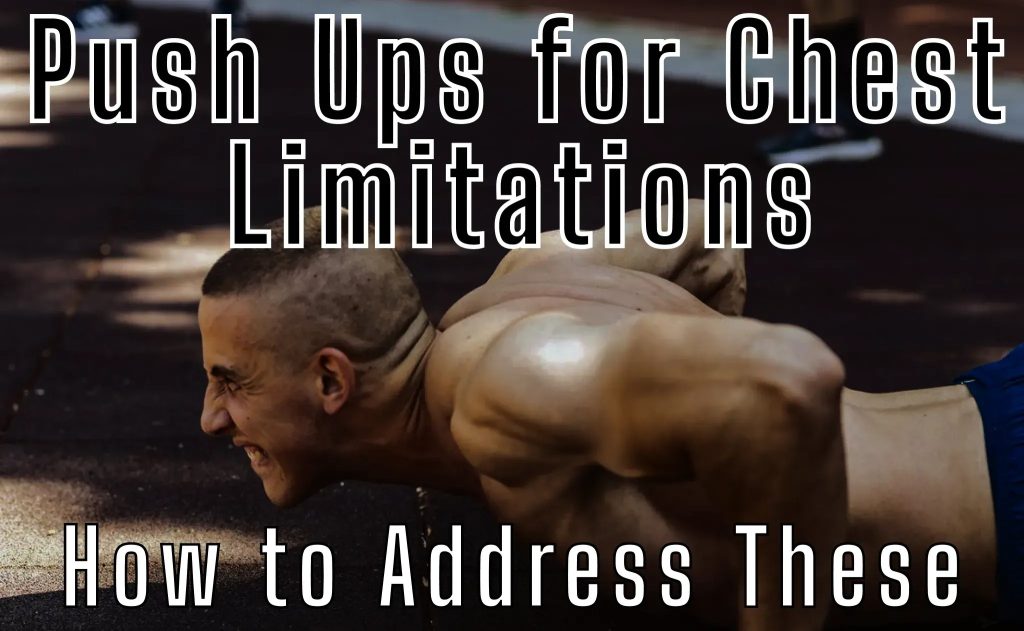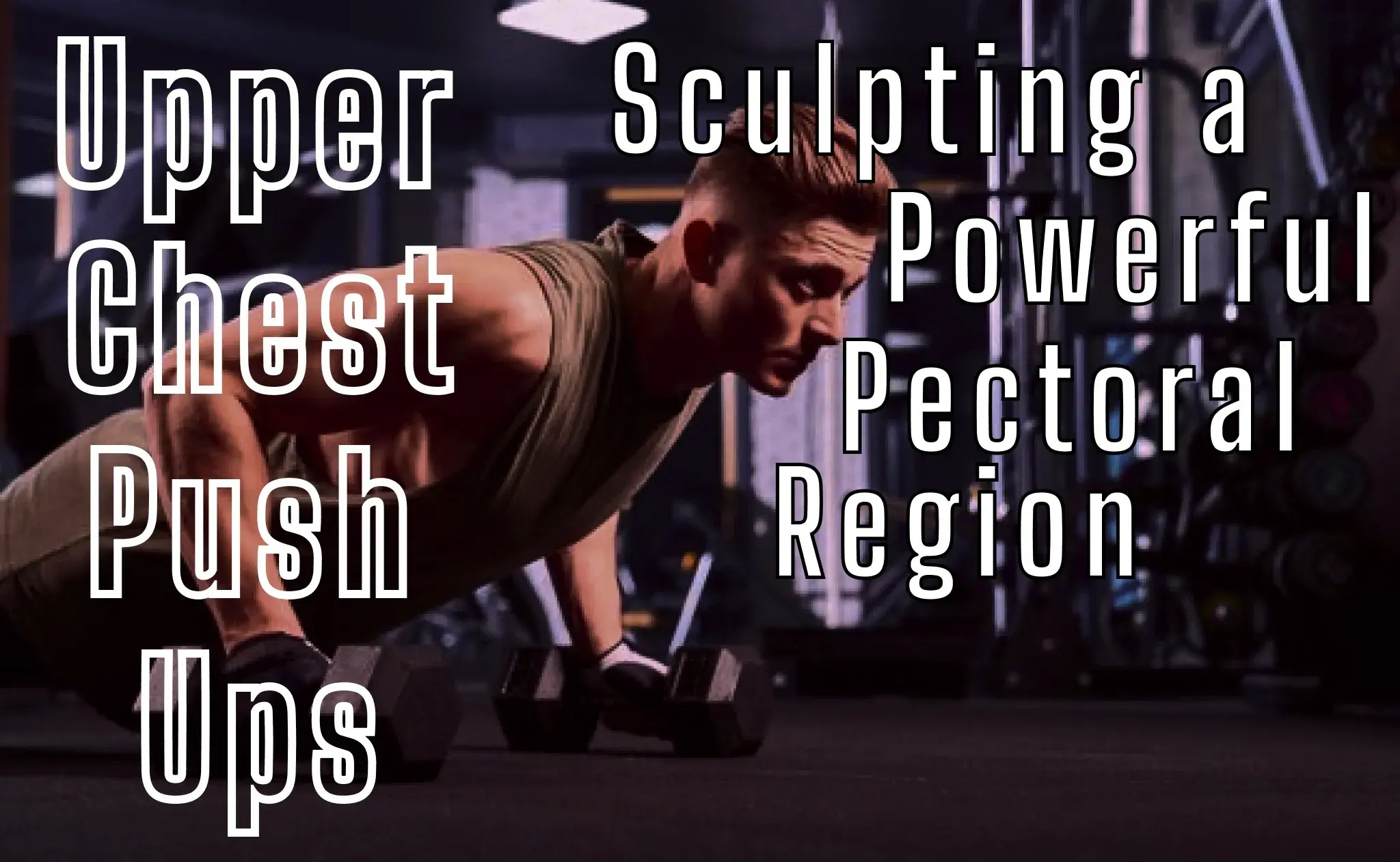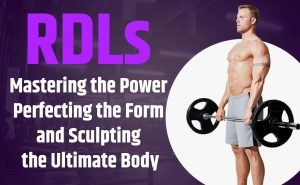Upper chest push ups offer more than just aesthetic benefits. They also enhance your upper body strength and power. While decline push ups are commonly known, there is a whole range of variations to target your upper chest, including incline push ups, feet elevated push ups, diamond push ups, and plyometric push ups. Don’t limit yourself to just decline push ups. By incorporating upper chest push ups into your routine, you’ll sculpt a powerful upper chest and achieve a well-defined upper body.
The Importance of Targeting the Upper Chest
Targeting the upper chest is crucial for a well-rounded and powerful physique. By focusing on this specific area of the chest, you can achieve a balanced and symmetrical look. The upper chest muscles, including the pectoralis major and pectoralis minor, play a vital role in enhancing upper body strength and functionality.
Neglecting this area can lead to an imbalanced appearance and limitations in overall upper body performance. Incorporating exercises that specifically target the upper chest can help you achieve a sculpted and well-defined pectoral region, ultimately contributing to a more impressive upper body physique.
Understanding the Pectoralis Major and Pectoralis Minor Muscles
Before diving into the benefits of upper chest push ups, it’s important to understand the muscles they target. The pectoralis major and pectoralis minor are two key muscles located in the chest area. These muscles work together to provide support, stability, and power to various upper body movements.
The Pectoralis Major: The Powerhouse of the Chest
The pectoralis major is the larger and more prominent muscle of the chest. It is responsible for the bulk and overall shape of the chest region. This muscle consists of two parts, the clavicular head and the sternal head.
- The clavicular head is located closer to the collarbone.
- The sternal head is situated closer to the sternum.
When you perform upper chest push ups, particularly incline push ups, it is the clavicular head of the pectoralis major that is primarily activated. This part of the muscle is crucial for enhancing the upper chest’s definition and creating that desirable “pec separation.”
The Pectoralis Minor: The Supportive Muscle
Located beneath the pectoralis major, the pectoralis minor is a smaller muscle that plays a supportive role in upper body movements. Despite its smaller size, this muscle is essential for maintaining proper shoulder alignment and stability.
- It originates from the third, fourth, and fifth ribs and attaches to the coracoid process of the scapula.
Best Push Ups for Chest: Decline Push Ups
When it comes to building a strong and defined chest, decline push ups are one of the best exercises you can do.
- Decline push ups involve placing your feet on an elevated platform, such as a bench or step, while keeping your hands on the ground.
This positioning creates an inclined angle that targets the upper chest muscles more intensely.
Push ups for Upper Chest: Variation is Key
To target your upper chest effectively, there are several push up variations you can incorporate into your workout routine.
Decline Push Ups
You place your feet on an elevated surface while keeping your hands on the ground.
- This positioning shifts the focus to the upper chest muscles, allowing for a more intense workout.
Incline Push Ups
Involve placing your hands on an elevated surface, such as a step or bench, and keeping your feet on the ground.
- This angle places greater emphasis on the upper chest muscles, helping to develop strength and definition in that area.
Diamond Push Ups AKA “Close Grip Push Ups”
Instead of placing your hands shoulder-width apart, you position them close together, forming a diamond shape with your index fingers and thumbs.
- This hand placement places greater stress on the upper chest muscles, resulting in increased activation and muscle growth.
Plyometric Push Ups
This explosive variation involves pushing off the ground with enough force to lift your hands off momentarily.
- Plyometric push ups not only engage the upper chest but also enhance power and explosiveness in the upper body.
Push Ups for Chest Limitations: How to Address These

As highly effective push ups are for developing upper body strength, particularly in the chest, shoulders, and triceps, like any exercise, push ups have limitations that are important to be aware of.
Limited Range of Motion
Push ups primarily involve movement at the shoulder and elbow joints, which can restrict the full range of motion compared to other exercises.
- To fix this, try using weight plates or dumbbells to elevate your hands.
- Buy push-up handles for longer range of motion.
Inadequate Resistance Progression
As push ups rely on body weight, it can be challenging to progressively increase resistance. Once you reach a certain level of strength, adding more repetitions may not provide sufficient challenge for muscle growth.
- Use variations of other push ups, diamond push ups or decline push ups.
- Add weighted vest or resistance bands.
Muscular Imbalances
Push ups primarily target the chest, shoulders, and triceps, potentially leading to muscular imbalances if other muscle groups, such as the back and legs, are not adequately trained.
- Include exercises that target the opposing muscles to maintain muscle balance. For example, rows or pull ups can strengthen the back muscles, while squats or lunges engage the lower body.
Joint Stress
Improper form or excessive repetition can place strain on the wrists, elbows, and shoulders, increasing the risk of joint injuries.
- Maintain proper alignment and listen to your body’s cues.
- Ensure proper form and technique during push ups to minimize stress on the joints – keep your wrists, elbows, and shoulders properly aligned.
- Consider performing push ups on soft surfaces or using push up handles to reduce wrist and joint strain.
- Allow for sufficient rest and recovery between workout sessions to prevent overuse injuries.
Best Push Up for Chest: Perfecting the Form to Excel
To maximize the benefits and effectively target your upper chest muscles, it’s crucial to focus on proper form and technique.
Maintaining a Strong Core and Engaging the Upper Chest
Start by assuming a plank position, with your hands slightly wider than shoulder-width apart and directly beneath your shoulders.
- Start by assuming a plank position, with your hands slightly wider than shoulder-width apart and directly beneath your shoulders.
- As you lower your body, concentrate on actively contracting your upper chest muscles. Imagine driving your elbows towards each other to engage the muscles near your collarbones.
- Maintain this engagement throughout the movement, and you’ll feel a stronger contraction in your upper chest as you push back up.
Correct Posture and Alignment
Good posture and alignment are essential for performing push ups correctly and effectively.
- Keep your body in a straight line from your head to your heels throughout the entire exercise.
- Avoid raising or lowering your hips, as this can put unnecessary strain on your lower back.
- To ensure proper alignment, maintain a neutral spine by looking slightly ahead, rather than tucking your chin or gazing upwards.
- Contract your glutes to help stabilize your hips and maintain a straight body position.
Breathing Techniques for Optimal Results
Proper breathing is often overlooked during push ups, but it plays a significant role in optimizing your performance and results.
- As you lower your body towards the ground, inhale deeply through your nose, filling your lungs with air. This helps stabilize your core and prepare your muscles for the exertion.
- As you push back up, exhale forcefully through your mouth, contracting your abdominal muscles and expelling the air. This exhalation aids in generating more power and provides stability throughout the movement.
- Practice this breathing pattern consistently, and you’ll notice improved control, endurance, and engagement of your upper chest muscles during push ups.
Remember, mastering the upper chest push up technique takes time and practice. By incorporating these tips, you’ll develop a stronger mind-muscle connection, enhance your form, and target your upper chest muscles more effectively.
With patience and dedication, you’ll see progress and improve your overall upper body strength. So, keep pushing and enjoy the rewarding journey of perfecting your push up technique!
Tips for Maximizing Upper Chest Development
Upper chest development is a common goal for many fitness enthusiasts. Focusing on the upper chest muscles can provide a balanced and strong-looking physique. While decline exercises are often the go-to exercise for upper chest development, there are other essential strategies that you can follow to maximize your results.
Adequate Nutrition and Hydration
A balanced diet rich in protein and other essential nutrients is necessary for muscle repair and growth. Protein sources like eggs, chicken, fish, and tofu can provide the necessary amino acids for muscle building.
Moreover, dehydration can negatively affect your performance and muscle growth. Drinking enough water throughout the day will help keep your body hydrated, allowing it to function effectively during your workouts.
Sufficient Rest and Recovery
Rest and recovery are often overlooked but essential components of muscle growth and development. Your muscles need time to repair and regenerate after intense workouts to be able to adapt and grow.
Aim for at least 48 hours of recovery between upper chest workouts. Also, prioritize quality sleep to ensure your body produces growth hormone, which promotes muscle building.
Incorporating Other Complementary Upper Chest Exercises
While decline exercises are essential for upper chest muscle development, incorporating other complementary exercises can help you maximize your results.
Variations of push-ups, such as diamond push-ups, pike push-ups, and incline push-ups, can target the upper chest muscles from different angles, further enhancing stimulation. Combining these exercises with incline exercises in your workout routine will help you achieve a well-developed, balanced upper chest over time.
Conclusion: The Best Upper Chest Push Ups
Upper chest push ups are like the secret weapon in your bodybuilding arsenal. They target those upper chest muscles in a way that will leave you amazed. Forget about fancy equipment or complicated workouts. All you need is your own body and a floor.
It’s a simple movement, but don’t be fooled by its simplicity. These push ups are a game-changer.
Why are they so important, you ask? Well, they activate those hard-to-reach upper chest fibers that often get neglected. By incorporating upper chest push ups into your bodybuilding regimen, you’re giving those muscles the attention they deserve. You’ll be amazed at the gains you’ll see in no time.
Remember, in the world of bodybuilding, it’s all about finding those secret weapons that give you an extra edge. Upper chest push ups are one of those weapons that can help you unlock potential you never knew you had. So go ahead, my fellow fitness enthusiasts, and let those upper chest muscles roar!




